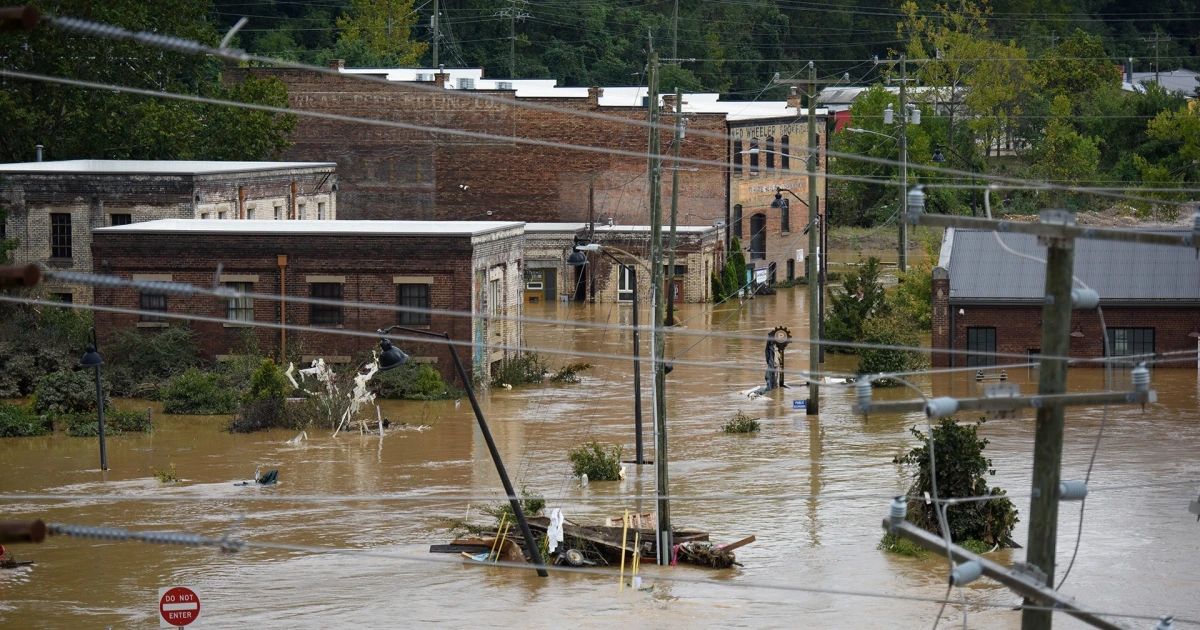The aftermath of Hurricane Helene continues to unfold across the Southeastern United States, with at least 91 fatalities reported and around 2.4 million residents without power as of Sunday afternoon, according to the Associated Press.
The storm made landfall in Florida’s Big Bend region on Thursday night as a Category 4 hurricane, boasting winds of up to 140 mph.
Although it has since been downgraded to a post-tropical cyclone, Helene remains over the Tennessee Valley, as per the National Hurricane Center.
In North Carolina, emergency responders have rescued over 200 individuals from floodwaters that have ravaged homes across several communities. Search teams are still actively looking for more than 1,000 missing persons in North Carolina and Tennessee.
Approximately 1,100 residents are currently sheltered in emergency facilities across North Carolina, dealing with extensive damage to their homes.
In response to the ongoing crisis, President Biden granted North Carolina Gov. Roy Cooper’s request for a Federal Major Disaster Declaration on Sunday, allowing FEMA to provide crucial aid to 25 counties and the Eastern Band of Cherokee.
As of Sunday evening, fatalities span five states—Florida, Georgia, North Carolina, South Carolina, and Virginia. The causes of these deaths include flooding, falling trees, and car accidents, with Florida confirming 11 deaths and South Carolina reporting the highest toll at 24.
READ ALSO: Hundreds feared killed as Hurricane Ian pummels Florida
Gov. Ron DeSantis described the destruction in Florida as “complete obliteration,” particularly in areas like Keaton Beach, which were still recovering from Hurricane Idalia last year.
North Carolina has recorded 10 weather-related deaths, with Buncombe County alone having over 1,000 individuals unaccounted for. In Tennessee, officials reported that more than 70 people remain missing.
As of Sunday, nearly 2.4 million homes and businesses across the affected states were still without electricity. South Carolina was hit hardest, with nearly 870,000 residents in the dark, followed by Georgia and North Carolina, which had 656,000 and 526,000 residents affected, respectively. Florida saw around 194,000 outages, while Virginia reported over 127,000.
AccuWeather estimates that Hurricane Helene’s damages and economic losses could range between $95 billion and $110 billion, making it one of the costliest storms in U.S. history. North Carolina experienced its worst flooding in a century, particularly in Yancey County, which saw nearly 30 inches of rainfall.
The storm also resulted in record-breaking rainfall in Atlanta, which received over 11 inches in 48 hours—the most since the 1800s. Georgia Gov. Brian Kemp indicated that statewide damages might exceed the $1.2 billion incurred during Hurricane Michael in 2018.
In Florida alone, about 84 structures have been destroyed, and over 4,000 have sustained water damage. FEMA has deployed over 800 staff members to provide support and resources to the hardest-hit areas.
Evacuations continued over the weekend as several dams, including the Nolichucky Dam in Tennessee and the Lake Lure Dam in North Carolina, overflowed.
The storm has been downgraded, but the National Weather Service warns of ongoing threats from heavy rain and flash flooding in the Central Appalachians and Mid-Atlantic regions, with a slight risk of excessive rainfall expected through Tuesday morning.

 Business6 days ago
Business6 days ago
 Business7 days ago
Business7 days ago
 Business6 days ago
Business6 days ago
 Latest1 day ago
Latest1 day ago
 Business6 days ago
Business6 days ago
 Business7 days ago
Business7 days ago
 Politics6 days ago
Politics6 days ago
 Latest3 days ago
Latest3 days ago

